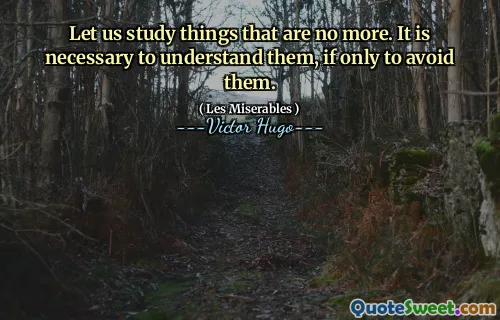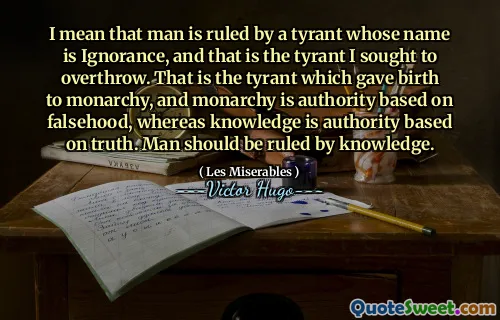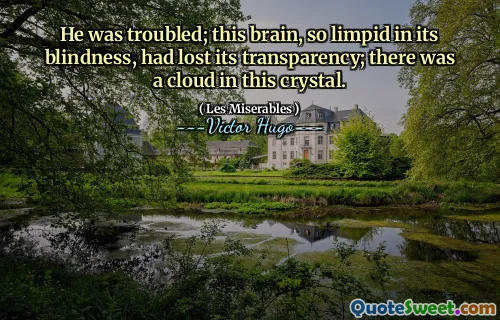There are two stages - living on little, and living on nothing. They are like two rooms, the first dark, the second pitch-black.
In Victor Hugo's "Les Miserables," the author illustrates the profound struggles associated with poverty through the metaphor of two stages of existence. The first stage, described as living on little, symbolizes the hardships and challenges faced by individuals with limited resources. This stage is characterized by constant struggle, akin to residing in a dimly lit room where hope exists but is obscured by the darkness of financial constraints.
The second stage, living on nothing, represents an even more severe condition where despair prevails, depicted as a pitch-black room. In this state, individuals lack not only material possessions but also hope and opportunity. Hugo's poignant imagery captures the depth of human suffering brought on by poverty, inviting readers to contemplate the desperate conditions that many endure in their quest for dignity and survival.











